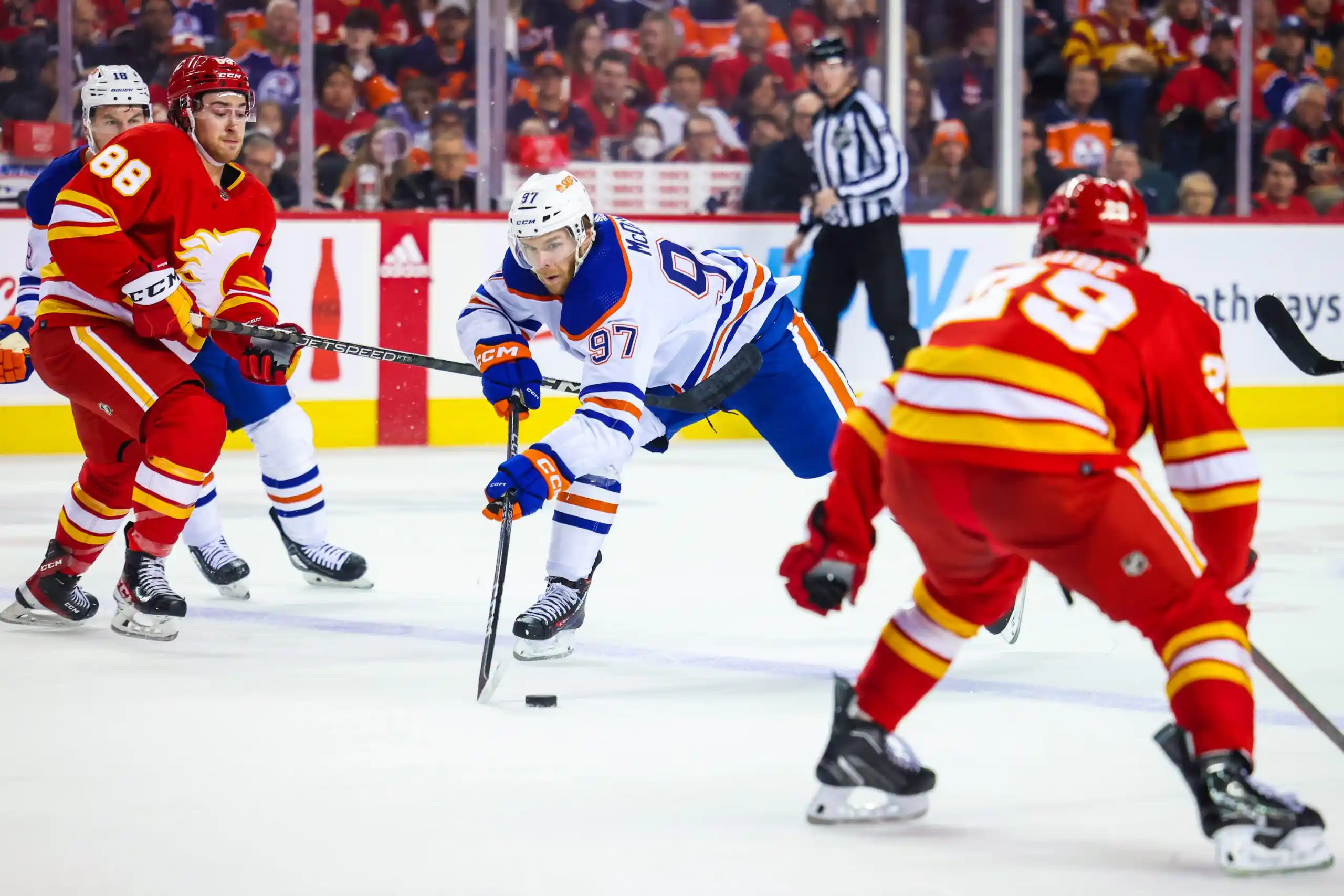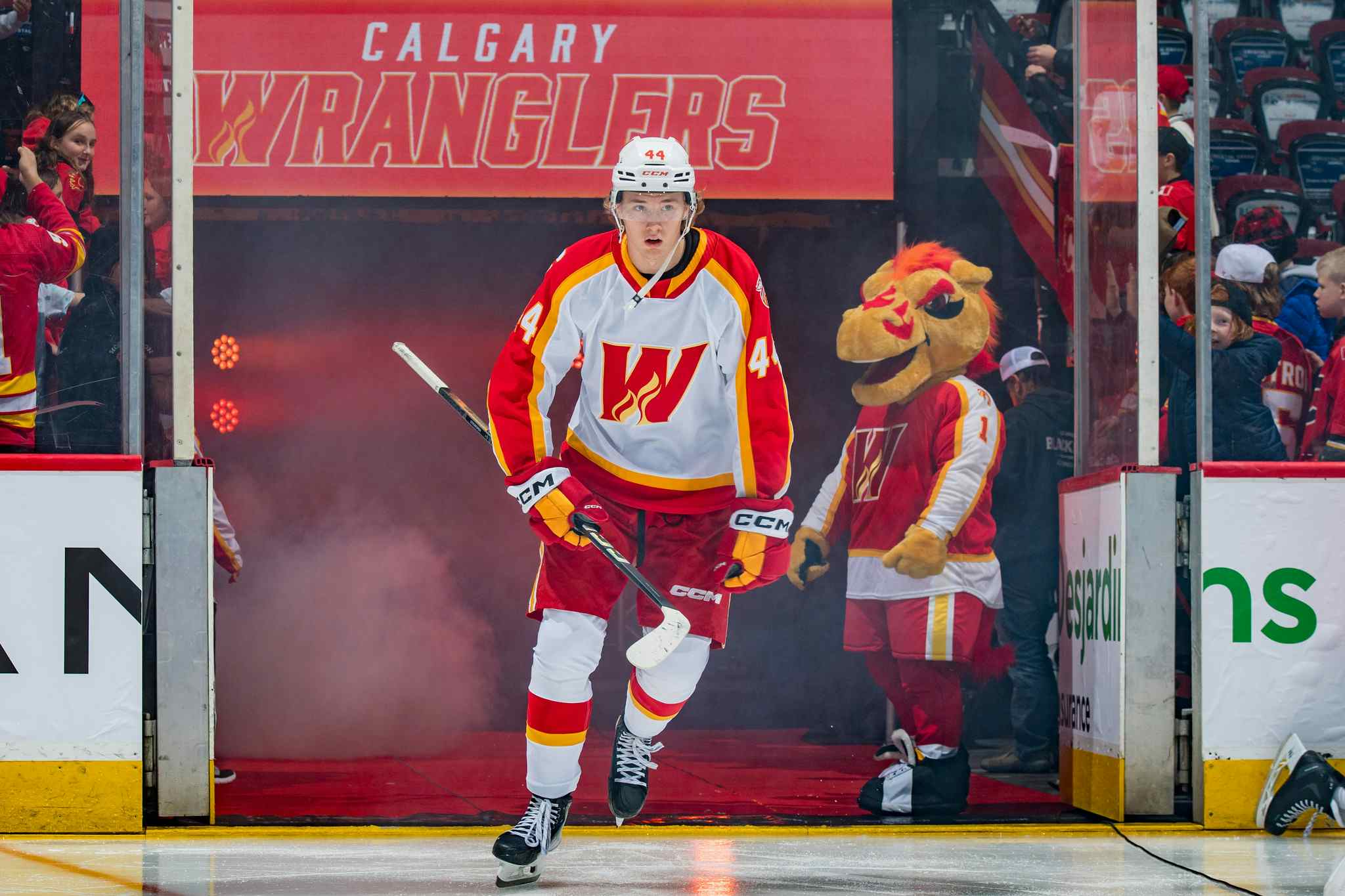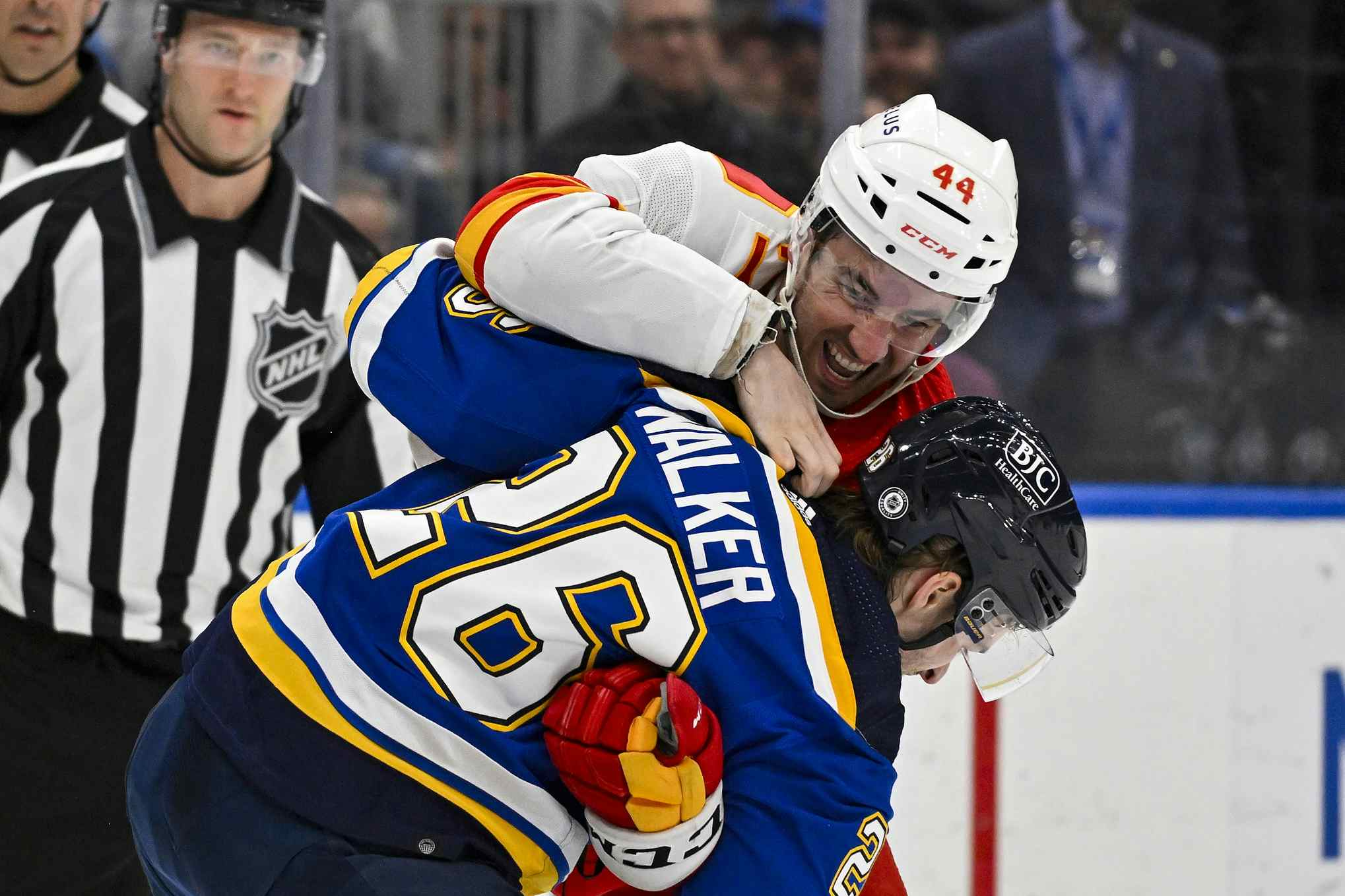How much does Bob Hartley really play the kids?
By Ari Yanover
8 years agoWhen Bob Hartley became the Flames’ head coach, he wasn’t signing up for a rebuild. The team desperately needed one, but at the start of the 2012-13 season, that wasn’t the objective. They still had Jarome Iginla, they still had Miikka Kiprusoff, and the objective remained clear: just make the playoffs, and anything can happen.
Only the Flames hadn’t made the playoffs for a while, and they weren’t about to that year. The 2013 season was a disaster from the start, in part thanks to Hartley, a coach unfamiliar with his new players, having only a shortened training camp with which to work. And sure enough, by the season’s end the Flames’ stars were traded off, various kids were filling in the lineup, and Hartley was coaching a rebuilding team.
An important element of rebuilding is ensuring the kids get ice time. This is Hartley’s third season coaching a team that’s actually rebuilding. How has he fared at that task?
Two quick notes before we really begin:
- For the purposes of this post, I’m defining a “kid” as someone 25 years old or younger, the maximum age someone can be to win the Calder Trophy. However, it’ll still be noted if they’d played multiple NHL seasons beforehand, or if they were a rookie.
- I’m not including the 2013 season here because that was the season Hartley really had no chance due to the lockout. He didn’t get to know his players, and by the end of it, he was playing a handful of random kids out of necessity as everyone else got sold off. By the time 2013-14 rolled around he was much more settled in his position as the Flames’ head coach, and that’s the season the rebuild truly began.
2013-14
The 2013-14 season saw 44 players dress for the Flames, 23 of whom were 25 years old or younger at the time. The majority of these kids barely hit even 10 games, if that, so it’s a little misleading just how young the lineup was night in and night out.
However, it’s not as though all kids are created equal. A Sean Monahan, for example, would naturally play more than a Bryce Van Brabant.
| Player | Age | Seasons in the NHL | Games Played | Average Ice Time |
| Sean Monahan | 19 | 1 (Rookie) | 75 | 15:59 |
| Johnny Gaudreau | 20 | 1 (Rookie) | 1 | 15:11 |
| Markus Granlund | 20 | 1 (Rookie) | 7 | 12:05 |
| Tyler Wotherspoon | 20 | 1 (Rookie) | 14 | 13:27 |
| Bill Arnold | 21 | 1 (Rookie) | 1 | 13:35 |
| Max Reinhart | 21 | 2 (Rookie) | 8 | 10:42 |
| Kenny Agostino | 21 | 1 (Rookie) | 8 | 11:06 |
| Sven Baertschi | 21 | 3 (Rookie) | 26 | 14:07 |
| Bryce Van Brabant | 22 | 1 (Rookie) | 6 | 9:10 |
| Roman Horak | 22 | 3 | 1 | 4:04 |
| Joni Ortio | 22 | 1 (Rookie) | 9 | 55:39 |
| Mark Cundari | 23 | 2 (Rookie) | 4 | 10:47 |
| Corban Knight | 23 | 1 (Rookie) | 7 | 7:56 |
| Ben Hanowski | 23 | 2 (Rookie) | 11 | 7:15 |
| Lance Bouma | 23 | 3 | 78 | 12:36 |
| T.J. Brodie | 23 | 4 | 81 | 24:04 |
| Lane MacDermid | 24 | 3 (Rookie) | 1 | 4:08 |
| Christopher Breen | 24 | 1 (Rookie) | 9 | 9:23 |
| Chad Billins | 24 | 1 (Rookie) | 10 | 12:13 |
| Paul Byron | 24 | 4 | 47 | 14:27 |
| Joe Colborne | 24 | 4 (Rookie) | 80 | 14:16 |
| Mikael Backlund | 24 | 6 | 76 | 18:32 |
| T.J. Galiardi | 25 | 6 | 62 | 14:37 |
The first thing one notices here is that this season was crawling with rookies. It makes sense, as it was the first year of the Flames’ rebuild, and 17 of the 23 players had played 25 or fewer games in the NHL.
The second thing you notice is only seven of these guys even played half the season, and of those seven, only two – Monahan and Colborne – were rookies. For rookies, they got respectable ice times, Monahan in particular.
Brodie and Backlund had long-since established themselves as NHLers, and they got the ice time to prove it. Guys like Byron and Galiardi were up there as well, although without the history to encourage more.
The only other player on this list to play a decent number of games and average at least 14 minutes was Baertschi, whose game was fluctuating, but didn’t have the chance to work through his misgivings like Monahan did, particularly once Brian Burke took the GM’s reigns.
Bouma played throughout the entire year, but in more of a fourth line role: exactly what he was suited for. Tyler Wotherspoon was en route to a pretty decent cup of coffee before a shoulder injury prematurely ended his season.
Easily the most perplexing player on this list, however, is Horak. He never pulled big minutes for the Flames, but he’d played 81 games before the 2013-14 season, and was averaging 14:32 in the 2013 lockout year. And then he just… wasn’t used anymore. At all. While a bunch of rookies got their cups of coffee with low ice times – especially a lot of college kids who got to burn a year off their entry deals – Horak, still just 22 and with established history with the team, was completely shut out.
2014-15
Thirty-nine players dressed for the Flames in 2014-15, including 21 who were age 25 or younger. More of the kids this time around played more games, several building on the season they’d had before, while others hadn’t played enough and would still be classified as rookies.
| Player | Age | Seasons in the NHL | Games Played | Average Ice Time |
| Sam Bennett | 18 | 1 (Rookie) | 1 | 16:00 |
| Emile Poirier | 20 | 1 (Rookie) | 6 | 7:59 |
| Sean Monahan | 20 | 2 | 81 | 19:37 |
| Tyler Wotherspoon | 21 | 2 (Rookie) | 1 | 20:19 |
| Brett Kulak | 21 | 1 (Rookie) | 1 | 19:31 |
| Markus Granlund | 21 | 2 (Rookie) | 48 | 13:22 |
| Johnny Gaudreau | 21 | 2 (Rookie) | 80 | 17:43 |
| Max Reinhart | 22 | 3 (Rookie) | 4 | 8:05 |
| Sven Baertschi | 22 | 4 | 15 | 9:13 |
| Micheal Ferland | 22 | 1 (Rookie) | 26 | 10:31 |
| John Ramage | 23 | 1 (Rookie) | 1 | 18:10 |
| Joni Ortio | 23 | 2 (Rookie) | 6 | 55:33 |
| Corban Knight | 24 | 2 (Rookie) | 2 | 6:24 |
| Drew Shore | 24 | 3 | 11 | 10:40 |
| Josh Jooris | 24 | 1 (Rookie) | 60 | 14:30 |
| Lance Bouma | 24 | 4 | 78 | 14:01 |
| T.J. Brodie | 24 | 5 | 81 | 25:12 |
| David Wolf | 25 | 1 (Rookie) | 3 | 9:23 |
| Paul Byron | 25 | 5 | 57 | 14:28 |
| Mikael Backlund | 25 | 7 | 52 | 17:45 |
| Joe Colborne | 25 | 5 | 64 | 15:25 |
The 2014-15 season was still filled with rookies, with 13 out of 21 kids having played 25 or fewer NHL games in previous years. Gaudreau was heads and shoulders above the rest, while Jooris and Granlund still played notable roles. Ferland played just enough to lose his rookie status, but not in a prominent role, and he sat for a fair number of games as well.
Players from the year before, like Monahan, Colborne, and Bouma saw their ice times go up as they were trusted more, and Byron, Backlund, and especially Brodie remained in prominent roles.
Then, there are the players who were just completely neglected. Baertschi and Wotherspoon were essentially ignored entirely, with absolutely no progress or opportunity granted similar to what they’d had the season before. Reinhart was in a similar boat. Knight fell off the radar, and while his replacement in Shore was given a greater chance, it didn’t exactly allow for real opportunity.
Poirier made his NHL debut, but didn’t have the chance to do anything with it.
Furthermore, this list is a little misleading due to the final game of the season, in which the Flames sat a lot of veterans, and brought in kids to take big minutes. Four rookies – Bennett, Wotherspoon, Kulak, and Ramage – wouldn’t be on this list at all were it not for the regular season finale.
2015-16, 25 games in
Thus far, just 27 players have dressed for the Flames this season, 12 of whom are 25 or younger. The number of rookies has dropped off entirely, in part due to players losing their rookie statuses, and possibly in part due to it being so early in the season – a time when kids typically aren’t brought up to make their NHL debuts.
| Player | Age | Seasons in the NHL | Games Played | Average Ice Time |
| Sam Bennett | 19 | 2 (Rookie) | 24 | 15:22 |
| Sean Monahan | 21 | 3 | 25 | 20:08 |
| Brett Kulak | 22 | 2 (Rookie) | 6 | 10:00 |
| Markus Granlund | 22 | 3 | 4 | 10:16 |
| Dougie Hamilton | 22 | 4 | 25 | 19:18 |
| Johnny Gaudreau | 22 | 3 | 25 | 20:01 |
| Micheal Ferland | 23 | 2 | 17 | 10:21 |
| Joni Ortio | 24 | 3 | 4 | 35:01 |
| Derek Grant | 25 | 3 (Rookie) | 9 | 9:15 |
| Lance Bouma | 25 | 5 | 3 | 11:18 |
| Josh Jooris | 25 | 2 | 20 | 11:18 |
| T.J. Brodie | 25 | 6 | 16 | 25:09 |
Only three rookies have suited up for the Flames thus far this season, and only one of them has actually stuck around. Kulak was starting to show some cracks, but wasn’t playing badly in limited minutes, and Grant was a good performer in a fourth line role, but a victim of waiver rules.
At least Bennett has been getting minutes, though, but that’s about it outside of Monahan, Hamilton, Gaudreau, and Brodie. And considering how Hamilton is a top four defenceman, his minutes count is rather low, albeit deserved after a poor start. It’ll likely go up as the season goes on.
The question is, will anybody else’s? Granlund isn’t suited for a fourth line role, but he’s been getting fourth line minutes, and not playing as much as he did in 2014-15. Jooris is in essentially the same position, although he’s likely more suited for a bottom six game than Granlund is (but he’s also been an undeserved healthy scratch a number of times, too). Ferland actually is suited for a fourth line role, but there’s been some flirtation with him playing in the top six, albeit nothing that’s actually been committed to.
And of course, there’s no need to go into further detail about how disgracefully little Ortio played considering how long he was up.
All in all
There’s no denying Hartley definitely plays the kids he’s given, but the quantity of kids is misleading, considering several of them were up for just a handful of games, mostly towards the end of the season. The start to this season is probably more representative than Hartley’s first few years, if only because it hasn’t had the chance to be inflated by call ups yet.
Occasionally a Jooris or a Kulak will get their chance, but there seems to be an inevitable drop off. Horak saw it, Baertschi saw it, Reinhart saw it, Wotherspoon saw it, and even Ortio saw it. Granlund and Jooris are currently seeing it as well.
Of course, this could simply be a case of overvaluing of prospects. While it would be nice for every kid the Flames draft to make the NHL, that’s simply not going to happen, and typically, as players get older, it becomes more evident if they have what it takes to play in the world’s best league, or if they’ll be one-and-dones. Some of them should be top six guys, and some of them should be bottom sixers, and it’s not necessarily a reflection of how much a coach believes in them but simply utilizing them in their proper roles.
As seasons go on, prospects are inevitably going to be weeded out, and only the top guys will remain. However, it can be tough to determine if the kids who were cut should have been, or if they would have flourished if given more of a chance.
Recent articles from Ari Yanover





